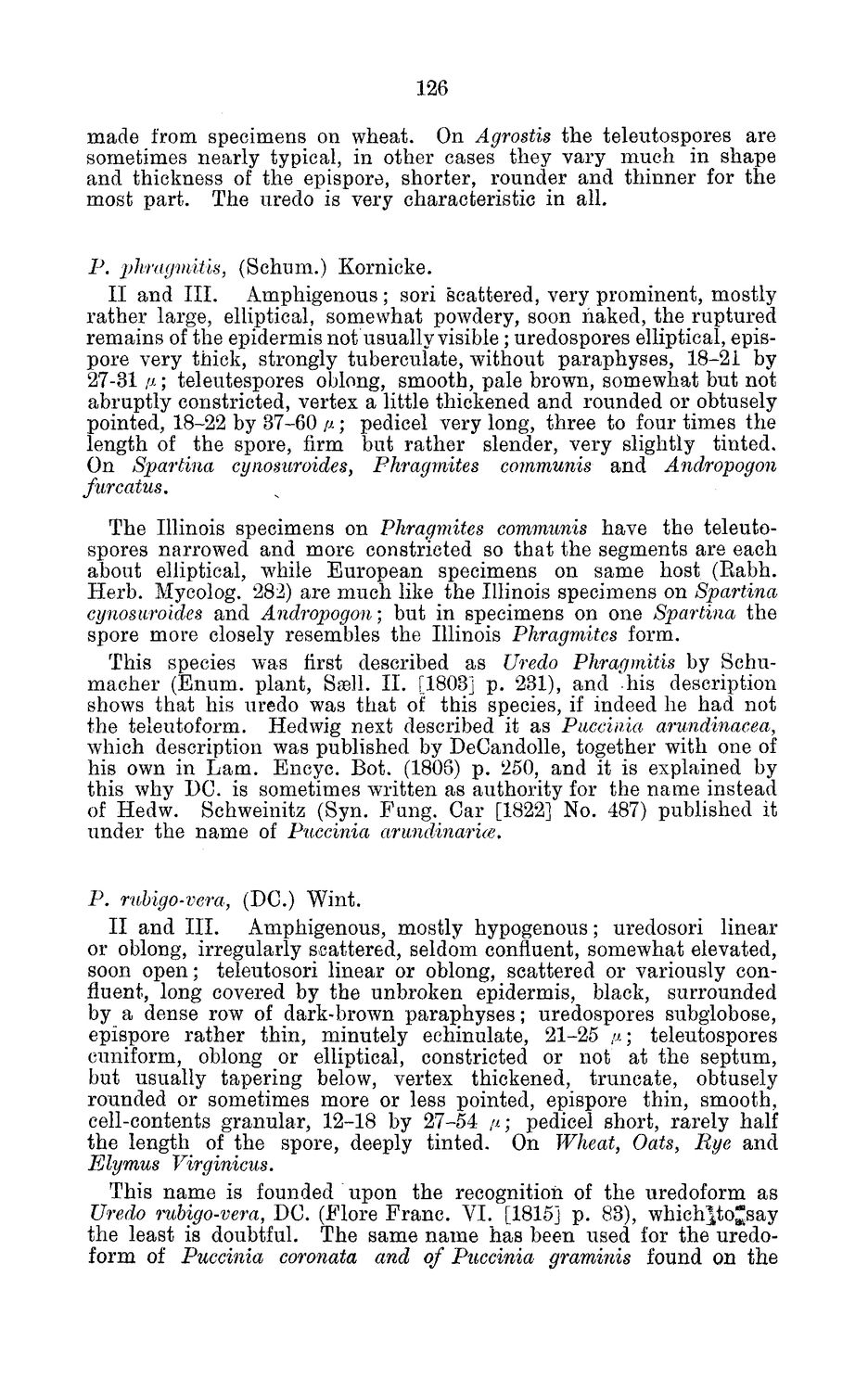| |
| |
Caption: Board of Trustees Minutes - 1884
This is a reduced-resolution page image for fast online browsing.

EXTRACTED TEXT FROM PAGE:
126 made from specimens on wheat. On Agrostis the teleutospores are sometimes nearly typical, in other cases they vary much in shape and thickness of the epispore, shorter, rounder and thinner for the most part. The uredo is very characteristic in all. P. phragmitis, (Schum.) Kornicke. II and III. Amphigenous; sori scattered, very prominent, mostly rather large, elliptical, somewhat powdery, soon naked, the ruptured remains of the epidermis not usually visible; uredospores elliptical, epispore very thick, strongly tuberculate, without paraphyses, 18-21 by 27-31 /JL ; teleutespores oblong, smooth, pale brown, somewhat but not abruptly constricted, vertex a little thickened and rounded or obtusely pointed, 18-22 by 37-60 /*; pedicel very long, three to four times the length of the spore, firm but rather slender, very slightly tinted. On Spartina cynosuroides, Phragmites communis and Andropogon furcatus. The Illinois specimens on Phragmites communis have the teleutospores narrowed and more constricted so that the segments are each about elliptical, while European specimens on same host (Eabh. Herb. Mycolog. 282) are much like the Illinois specimens on Spartina cynosuroides and Andropogon; but in specimens on one Spartina the spore more closely resembles the Illinois Phragmites form. This species was first described as Uredo Phragmitis by Schumacher (Enum. plant, Ssell. II. [1803] p. 231), and his description shows that his uredo was that of this species, if indeed he had not the teleutoform. Hedwig next described it as Puccinia arundinacea, which description was published by DeCandolle, together with one of his own in Lam. Encyc. Bot. (1805) p. 250, and it is explained by this why DC. is sometimes written as authority for the name instead of Hedw. Schweinitz (Syn. Fang. Car [1822] No. 487) published it under the name of Puccinia arundinarice. P. rubigo-vera, (DC.) Wint. II and III. Amphigenous, mostly hypogenous; uredosori linear or oblong, irregularly scattered, seldom confluent, somewhat elevated, soon open; teleutosori linear or oblong, scattered or variously confluent, long covered by the unbroken epidermis, black, surrounded by a dense row of dark-brown paraphyses; uredospores subglobose, epispore rather thin, minutely echinulate, 21-25 /x; teleutospores cuniform, oblong or elliptical, constricted or not at the septum, but usually tapering below, vertex thickened, truncate, obtusely rounded or sometimes more or less pointed, epispore thin, smooth, cell-contents granular, 12-18 by 27-54 //; pedicel short, rarely half the length of the spore, deeply tinted. On Wheat, Oats, Rye and Elymus Virginicus. This name is founded upon the recognition of the uredoform as Uredo rubigo-vera, DC. (Flore Franc. VI. [1815] p. 83), whichjto^say the least is doubtful. The same name has been used for the uredoform of Puccinia coronata and of Puccinia graminis found on the
| |